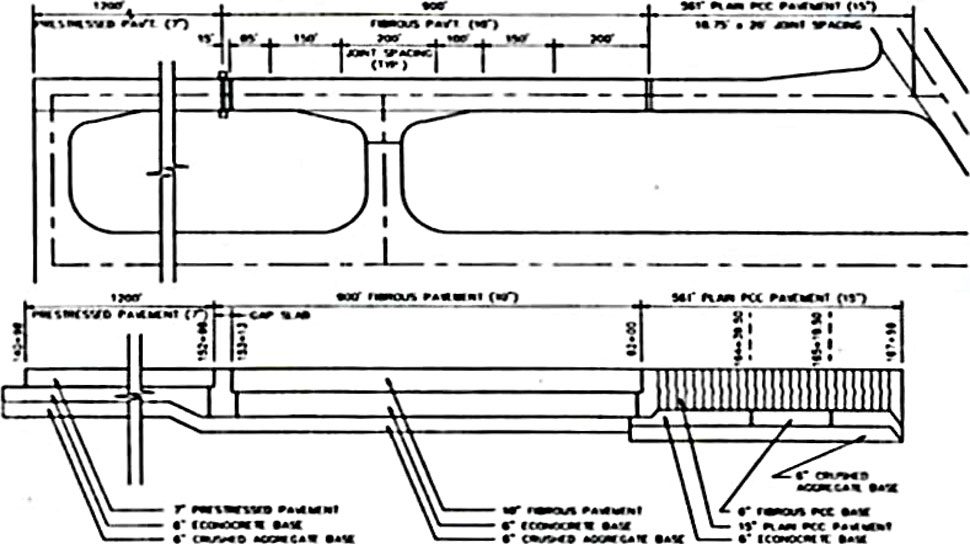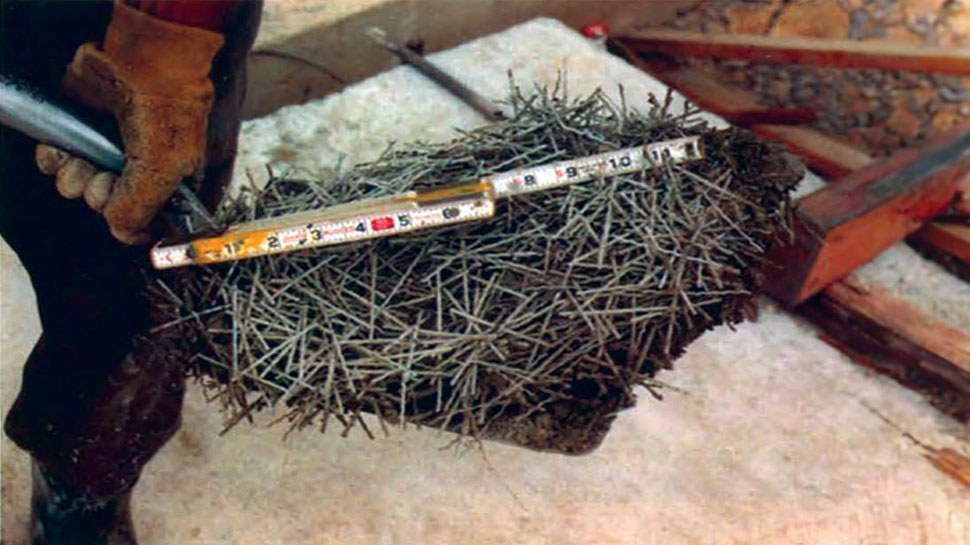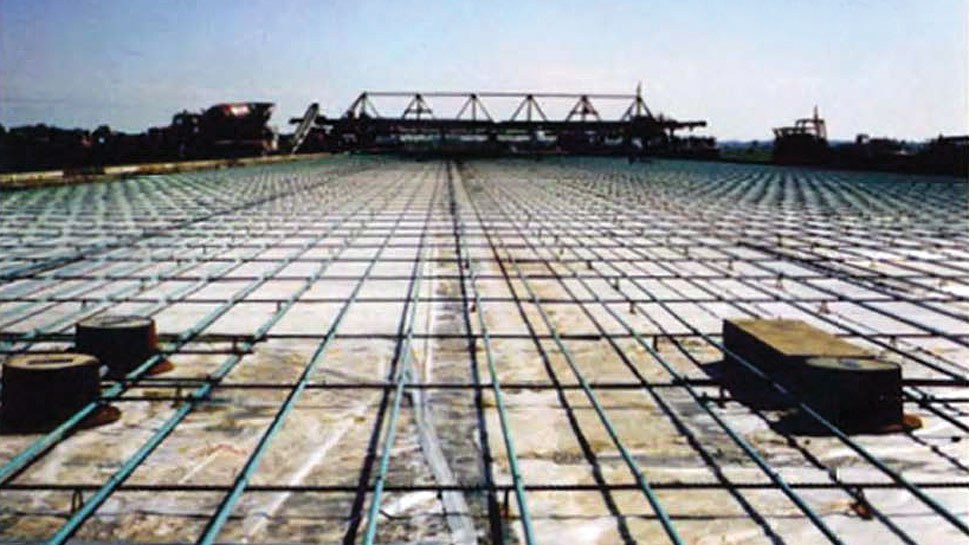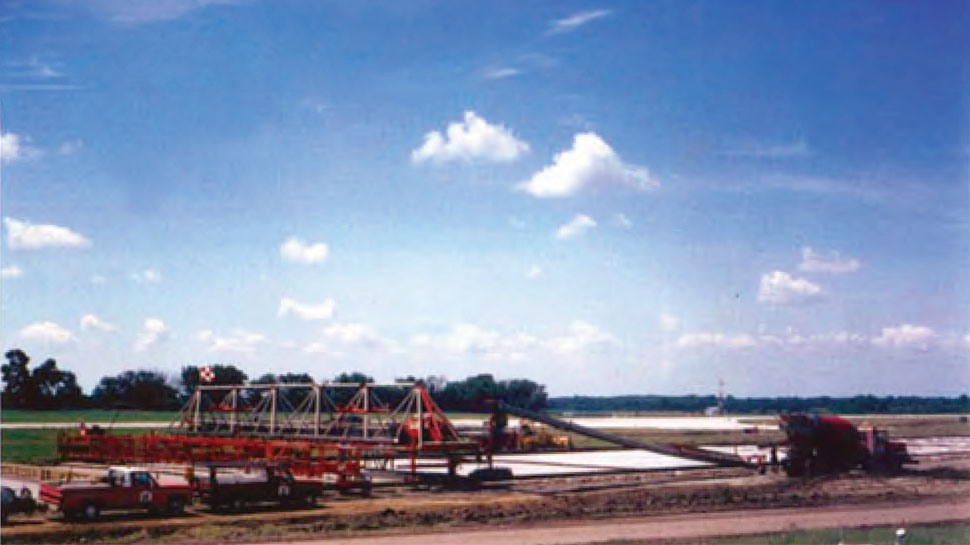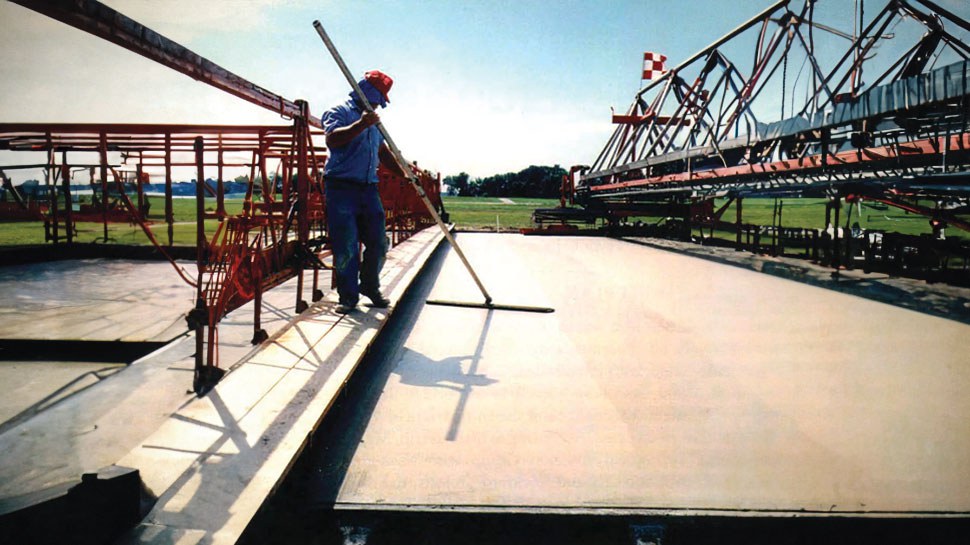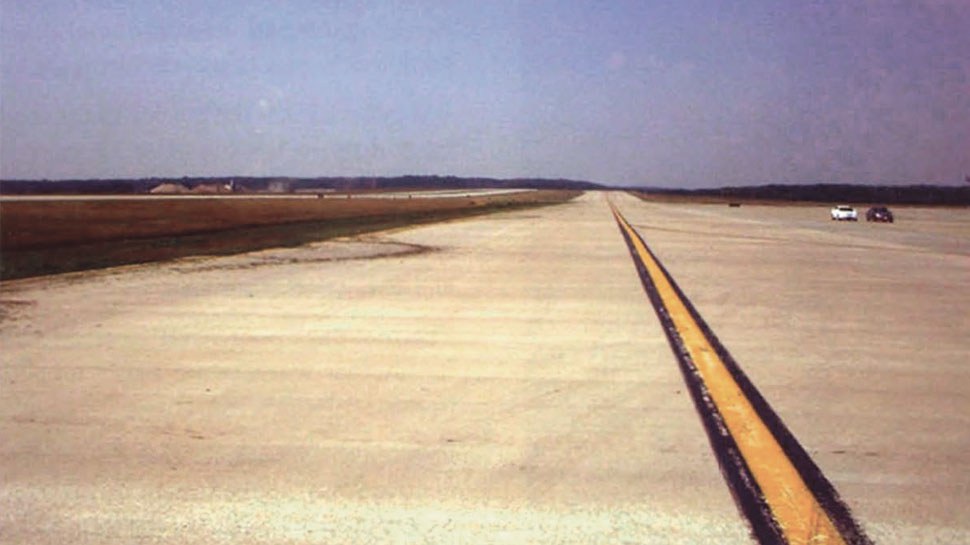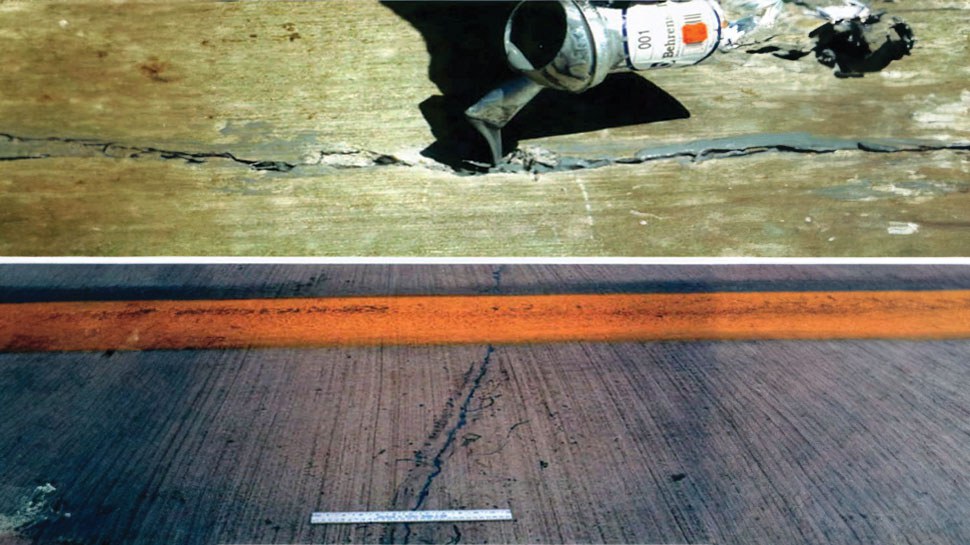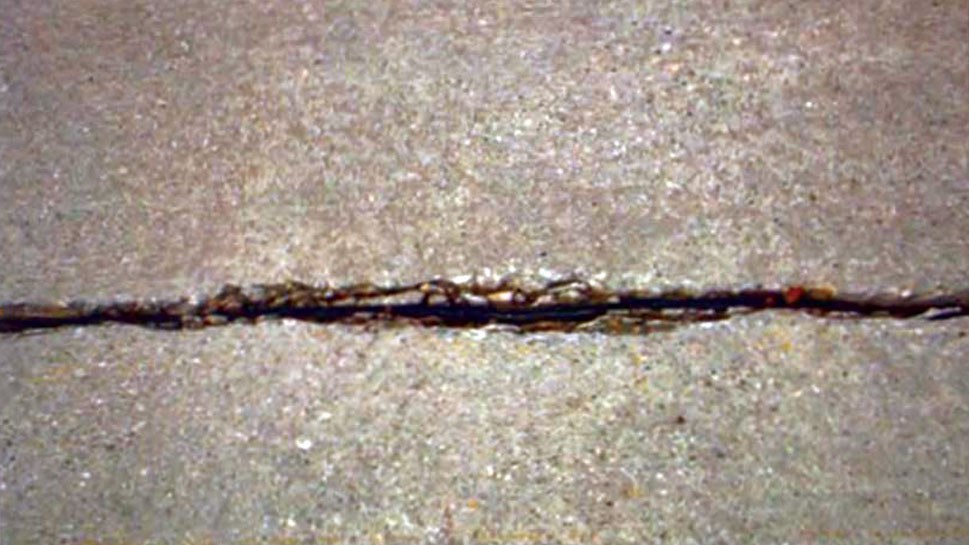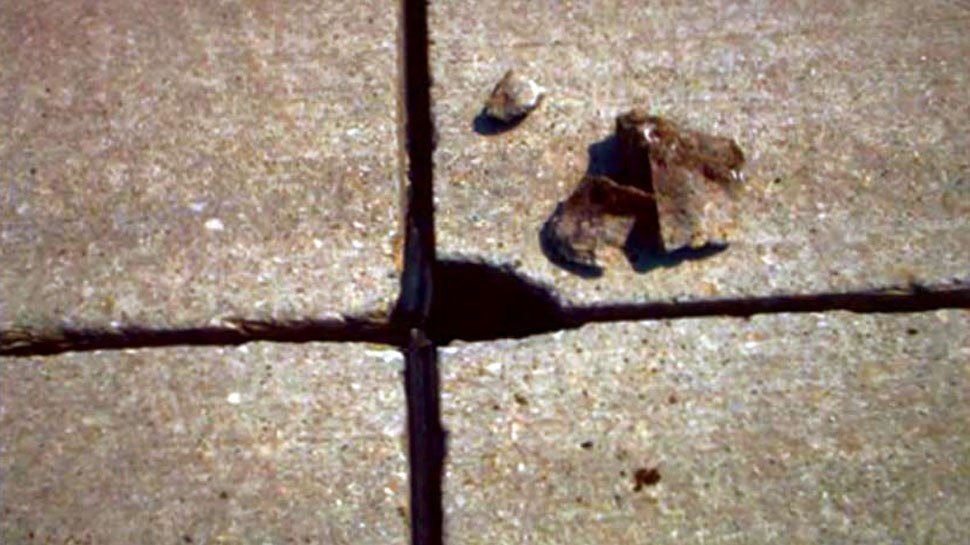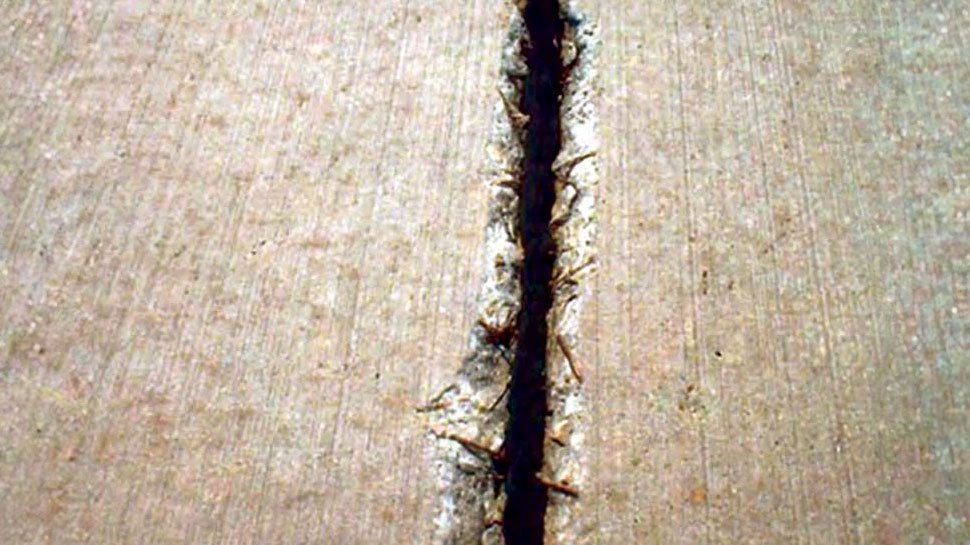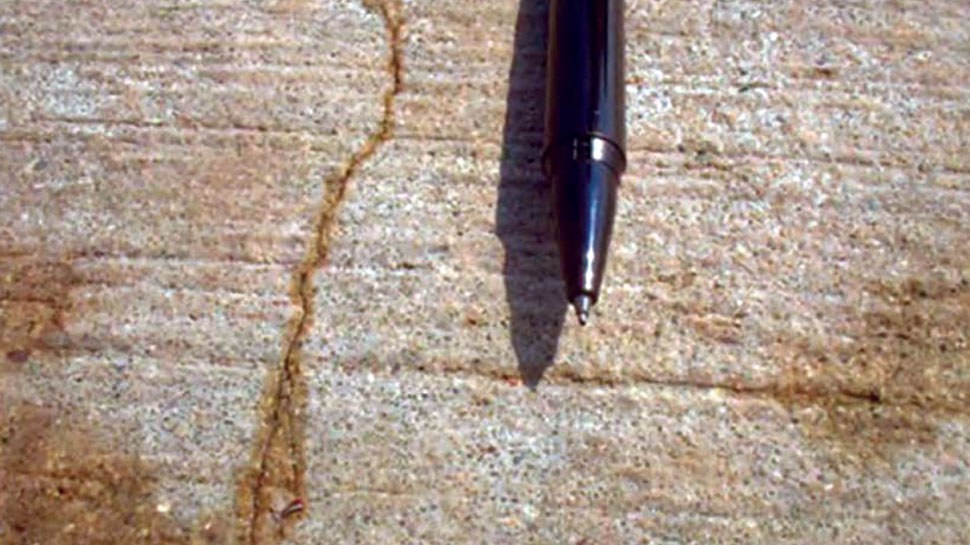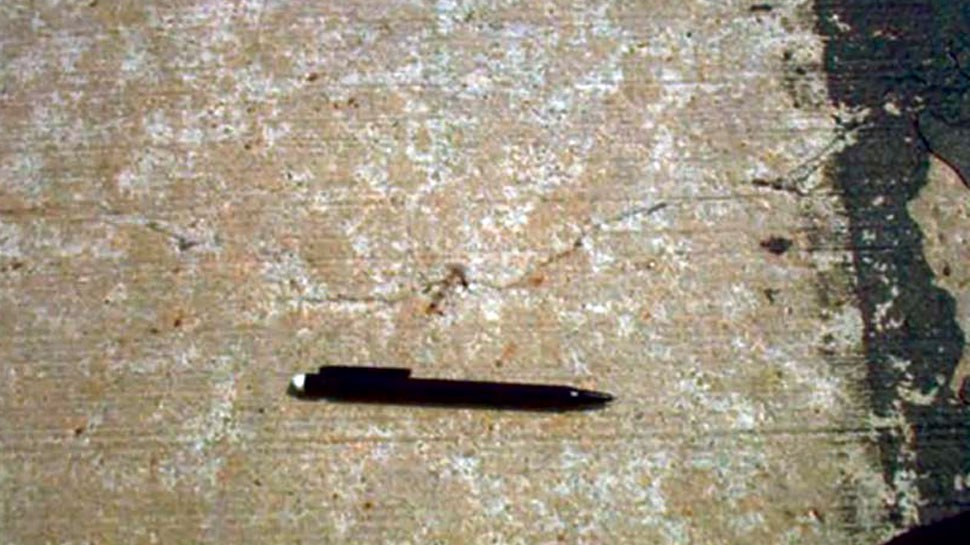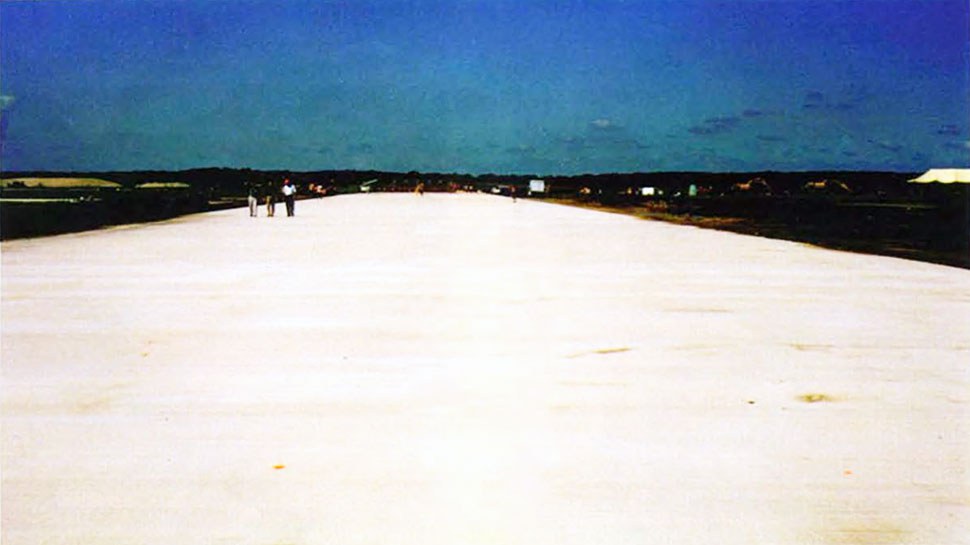
When you hear, “This is your captain speaking. Fasten your seat belts; we are expecting a rough ride ahead,” you probably think of airborne turbulence. But it could also be deteriorating joints in the runway that are jostling the aircraft. Joints are generally considered requisite to prevent random cracking of the slab, because fresh concrete shrinks and cracks as it dries (see "Chronic Joint Pain" sidebar below). But what if joints in pavements were unnecessary?
Eliminating joints has long been an objective of the Federal Aviation Administration (FAA), which regulates airport runways and taxiways. Joints are usually the locus of spalling, which not only causes bumpy rides but also creates a hazardous situation: Loose concrete fragments can get sucked into jet engine intakes.
In 1993, FAA's desire to solve these problems led the federal agency to construct one of the most unusual concrete slabs in the world at the Chicago Rockford International Airport (RFD). The post-tensioned pavement made with fibrous shrinkage-compensating concrete using Type K cement is 75 feet wide and 1,200 feet long -- with no joints cut into it. After 10 years, it had few cracks and virtually no spalling.
GROUND TRAINING
In the 1970s the FAA researched ways to reduce the number of joints in airport pavements. In addition to considering pre-stressed slabs, the agency tested the use of Type K cement in shrinkage-compensating concrete.
Developed in the 1960s, Type K cement is a combination of 85% conventional portland cement and 15% ASTM C878 expansive hydraulic cement. Concrete made with Type K cement experiences controlled expansion during the first seven days of curing, when shrinkage stress most often occurs. If the expansive concrete is internally restrained (by steel reinforcing bars or reinforcing fibers, for instance), the concrete stretches the steel as it grows. Like a rubber band holding together a deck of cards, this puts compression on the concrete, resisting the stresses that cause cracks.
In the mid-1980s the FAA considered a full-scale demonstration project at the Atlantic City, N.J., airport. Bruce Raterree, chief engineer at Crawford, Murphy & Tilly (CMT) in Springfield, Ill., and Ernest Barenberg, engineering professor at the University of Illinois at Champaign-Urbana, proposed two demonstration slabs: one with shrinkage-compensating concrete with Type K cement and steel fibers, the other with portland cement concrete post-tensioned in both the longitudinal and transverse dimensions to prevent cracking. The project was fully designed, but funding evaporated before construction.
After their disappointment in Atlantic City, Raterree and Barenberg wondered, over their morning coffee, if the two ideas couldn’t be combined into one. Post-tensioned slabs were thought to be limited to the maximum that could be paved in a single day, about 400 feet in length. Trying to combine two days of paving risks shrinkage cracking from the first day’s pour before the post-tension can be applied. Raterree and Barenberg schemed to overcome that limit by using Type K cement’s shrinkage-compensating properties.
FLIGHT PLAN
Their idea was to construct a long, long slab with no joints at all. Pavements are usually placed in strips about 25 feet wide with longitudinal joints between the strips. Raterree and Barenberg wanted to use bridge deck paving equipment that could cover the entire 75-foot width of a taxiway in one pass. According to CMT Aviation Group Manager Stan Herrin, who worked on both the Atlantic City and Rockford projects, the thinking process ran, “We could pave 75 feet wide and use shrinkage-compensating concrete and fibers to provide the required transverse pre-stressing. Longitudinally, the Type K cement would allow us to pave for up to a week without having to post-tension.”
Because Type K cement keeps expanding for seven days, they figured that was the only time limit before they had to apply post-tensioning. When Rockford Airport’s secondary runway was slated for extension, Raterree convinced the FAA to do in Rockford what they had wanted in Atlantic City...and more.
The Rockford Demonstration Project included three contiguous sections of taxiway paralleling a new runway extension. Each section would be placed in one 75-foot-wide pass using a Rotec bridge deck paver, and each would have identical subgrades.
TAKE OFF
The concrete was placed in summer, with afternoon ambient temperatures reaching 90°F, the upper limit recommended by the Type K cement’s producer. A constructability report written for FAA and U.S. Army Corps of Engineers (USACE) recorded that “the use of Type K cement did not create any handling, storing or delivery problems” and that it handled similarly to Type 1 portland cement concrete. It did note that, at temperatures around the recommended limit, the material became sticky and harder to finish.
The first day’s paving was cut short by rain. The contractor was prepared for this, and quickly installed an overnight header at the end of the pavement and laid burlap on the fresh pour to protect it from rain. This intervention of nature eventually provided a piece of key data about the project.
The rest of the 1,200-foot slab was completed on the second day. A curing compound was applied but not covered with burlap. The following morning, a 7 /8-inch-wide transverse crack was found in the middle of the second day’s pour. As the day heated up, the crack began to close. When it was 1/8-inch wide, it was sealed with 5 gallons of epoxy and the stressing of the post-tensioning tendons began, effectively clamping the crack shut.
It is believed that the crack was caused by a severe temperature drop in the concrete. Thermal monitoring devices installed as part of the demonstration project recorded internal concrete temperatures as high as 135°F shortly after placement. The next morning, it was 90°F -- a 45° drop.
The first day’s pour didn't experience such an extreme drop. Its internal temperature never topped 100°F because its protective burlap, wet from rain, cooled the concrete.
Post-tensioning was applied in two phases. An initial load of 30 kips was applied when the concrete reached 2000 psi compressive strength, the morning after placement was completed. The final stressing to 46.9 kips was applied when the concrete reached 3500 psi, one day later. The tensioning was done in a special sequence -- innermost tendons first, outermost next, and then the intervening ones -- to avoid torquing the slab.
THE JOURNEY
The pavement was inspected quarterly for five years. During the first year, small longitudinal cracks were observed in both IP1 and IP2 slabs, between 10 feet and 22 feet on either side of the centerline. They were short and very tight. CMT's Herrin believes these cracks might have been avoided. “Applying post-tensioning in the transverse dimension might have helped eliminate longitudinal cracks, but we might have been able to do it with more fibers, too.”
The IP1 slab also developed transverse cracks in the first year, some of which have gone the full width of the pavement. The overall crack pattern suggests that the natural crack spacing for this type of concrete is about 40 feet, roughly double that of the control section.
Shortly after the taxiway was completed, United Parcel Service (UPS) selected Rockford Airport as the site for a major sorting facility adjoining the taxiway. By the pavement’s third year, aircraft traffic was more than double what the taxiway had been designed for.
In 2003, 10 years after the taxiway was completed, an inspection team surveyed and evaluated the pavements using the pavement condition index (PCI). Developed by USACE and adopted by FAA, the PCI provides a numerical value between 0 and 100 to define the condition of a pavement, with 100 representing an excellent pavement.
The inspection team included Ed Rubin, one of the engineers who developed Type K cement and now a consultant to CTS Cement Manufacturing Corp. (CTS), producers of Type K cement. He was awed by the post-tensioned slab's condition. “After a decade, it's still nearly pristine,” he says.
Franz Olson, the airport's deputy director of Operations & Facilities, is also pleased with the jointless taxiway. “The pavement has held up extremely well," he says. "The cracking has been very, very minimal. There were some initial concerns with the fibers breaking loose, but that hasn't occurred. It has not caused any foreign object damage (FOD) concern."
In fact, the 10-year inspection team found fewer than six visible fibers per 1,000 square feet of pavement. “Hot weather buckling was a concern, but we haven’t experienced any problems," Olson says. "I believe the post-tensioning tendons keep that from occurring.”
The transverse crack that appeared the day after paving has remained closed. “When they measured the deflection, the crack was performing as well as the pavement 10 feet away,” says CMT's Herrin.
Other transverse cracks have appeared, but they are hairline cracks and not the pavement's full width. A report by the American Society of Civil Engineers described them as “difficult to find at normal walking speeds.” Only one new transverse crack appeared between the end of five-year monitoring and the 10-year survey. The longitudinal cracks are tight, typically 2 feet to 16 feet long, and show little spalling.
BLUE SKIES
Based on this performance, Herrin believes the technology could be used for even longer slabs.
How long?
“Miles! Seven days of paving,” he says. “The only limiting factors might be thermal expansion or wherever you have a bridge approach.” While no one is seriously suggesting scaling a quarter-mile-long demonstration project (at least not yet), his enthusiasm is understandable. Given the excellent condition of the post-tensioned fibrous Type K pavement, the surprise is that engineers and public agencies haven’t used this technology more often. Herrin thinks part of the explanation is the perception of costs. “There’s the belief that initial cost will be higher.”
In fact, this perception may be false.
Kyle de Bruyn, a CTS product engineer, did a cost analysis of the pavements. Using 2003 prices (per Get-A-Quote.net) for excavation, concrete, post-tensioning, etc., he came up with much different figures than what the FAA paid in 1993. He surmises that, in the intervening decade, post-tensioning has become a more widely accepted technology, lowering the price. Eliminating premiums that may have been paid because the technologies were novel in 1993, his analysis suggests that the post-tensioned pavement would cost about $4 less per square foot than the other two pavements, roughly an 8% discount. Factoring in the cost of joint maintenance makes the lifecycle costs of post-tensioned pavement even more attractive.
Rockford’s Olson would like to see more jointless pavements. “I think it would be a good technology to pursue further. With airports, you have to pay specific attention to making sure your expansion joints are properly maintained and filled, and if they’re not you’re going to suffer damage sooner or later. By using the continuous pour, you get a lot less chance of fatigue at any of those joints, and you’re eliminating all that additional maintenance.”
Rubin thinks the only obstacle is the usual reluctance to try something unfamiliar. “Someone’s got to have the guts,” he says. But after 10 years of documented performance, a decision to specify post-tensioned and shrinkage-compensating concrete is not as daunting as it once was.
SIDEBAR: CHRONIC JOINT PAIN
Joints are deemed necessary to concrete slabs because of a fundamental property of portland cement concrete (PCC): In the weeks and months after it's poured, PCC dries and shrinks. If the slab is unrestrained, shrinkage isn't a problem because the slab just gets smaller. However, in most situations, friction with the subgrade or interaction with adjacent construction restrains the slab, creating stresses as the concrete volume contracts. That stress causes cracking.
As a result, standard practice is to cut shrinkage control joints into slabs to encourage the concrete to crack in straight lines at chosen locations. These straight, regularly spaced, predictable cracks are easier to seal and neater in appearance than the random cracking that would otherwise occur. In other words, saw-cut joints represent the choice of controlled failure over uncontrolled failure. These joints are a permanent, accepted workaround for a shortcoming in the material.
Joints are also the weak link in many slabs. Drying isn't uniform throughout the slab. Exposed surfaces (usually the top and the edges) dry faster, shrink sooner, and cause slab edges to curl upwards. This curling makes joint edges vulnerable to spalling when impacted by traffic. Curling and spalling make the slab uneven, causing bumpy rides on road pavements, hazardous gaps on sidewalks and floors, and unsightly places for debris to collect. Around airports, spalling can also produce debris that can be sucked into a jet engine and cause foreign object damage (FOD).
Original publication: December 2006 PTI Journal, 82-87.
